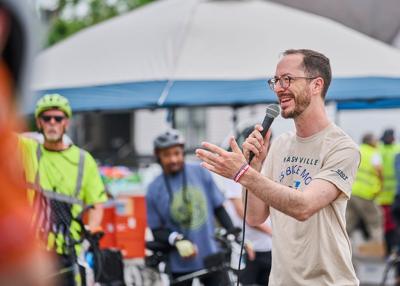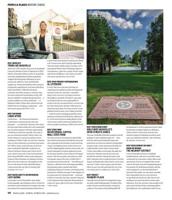Dry language describing Mayor Freddie O’Connell’s proposed transit upgrades may take less than 30 seconds to read when Nashvillians see it in a voting booth on Nov. 5. The official description, stamped last month by the Davidson County Election Commission, legally outlines a complex transaction proposed by O’Connell to his constituents.
He needs voters to approve the plan, officially branded “Choose How You Move: An All-Access Pass to Sidewalks, Signals, Service, and Safety.” Per state law, O’Connell’s proposed 0.5 percent sales tax increase requires a referendum — direct democracy for direct taxation — to add to the state’s 7 percent flat tax and 2.25 percent in existing county sales taxes. A 9.75 percent total sales tax rate will bring the city in line with conservative neighbors Wilson, Williamson and Rutherford counties. Critics point out the raw financial burden of adding an extra 50 cents to every $100 grocery bill. Unlike taxes on income or capital gains, sales taxes ask the same dollar amount at the register from the teacher, the bartender and the banker — a burden that hits lower earners harder than higher earners.
Initial cost would fund new transit centers, bus service improvements and traffic signal upgrades
The plan also requires city bonds, state assistance, federal funding and fare revenue. Metro Council approved the plan, officially dubbed a “transit improvement program,” in July.
Once tapped, sales tax money flows to every transit mode operating in Davidson County and, crucially, to none that doesn’t. Rather than go for light rail, a contentious feature of former Mayor Megan Barry’s failed 2018 referendum Let’s Move Nashville, O’Connell’s plan doubles down on what people already know: buses, cars and pedestrians.
Expanded bus routes that crisscross the county used to be the plan’s top-line selling point. The plan promises a 60 percent increase in bus service with added routes, extended lines and expanded hours of operation. WeGo, currently funded with yearly allocations, commands the bulk of the plan’s total $3.1 billion price tag. About $1.3 billion goes toward turning major arteries like Gallatin Avenue, Murfreesboro Pike and West End Avenue into “All Access Corridors,” with dedicated lanes running buses every 15 minutes for “walk-up” service. Several other transit centers, including new facilities on the county perimeter meant to catch commuter traffic, will build out crosstown capacity. It’s a welcome investment for the Nashvillians who rely on the bus — about 30,000 a week and growing — with potential to attract new users.
“Where I’m from, public transit wasn’t widely available, so upon moving to Nashville, I wanted to go visit some friends downtown from East Nashville,” says 24-year-old Hayden Davis, who moved from rural Alabama last year. “I saw it took 40 stops, an hour-and-a-half to get downtown.”
Minutes earlier, Davis had shared, with shock and dismay, the annual maintenance cost for his car quoted that day by his mechanic. “If there are more widely available options, I would use it. It’s easier and better for the environment.”
The plan tacks on traffic management infrastructure, like signals that can adapt to traffic flow, and supports the new Nashville Department of Transportation and Multimodal Infrastructure traffic management office. Such strategies were adopted by cities across the country decades ago. O’Connell also promises to double the pace of sidewalk construction, focusing both on the proposed All Access Corridors and the city’s hefty sidewalk backlog.
The line from O’Connell’s early days on the WeGo (then MTA) board to the Nov. 5 vote could not be much straighter. The mayor’s typical stump speech starts with a well-worn anecdote about how, as a 20-something, he got around Nashville without a car to save money for a down payment on a house. As a candidate, he sold himself as the nuts-and-bolts city manager who knew how to bend the vast Metro bureaucracy away from tourists and toward real people. For the mayor, this vote is personal.
Digging into Mayor Freddie O’Connell’s transit referendum, which will be on the ballot in November







